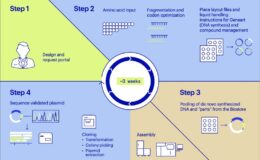
Salesforce created the customer relationship management (CRM) software market as we know it today, and with the rise of Salesforce CRM for B2B sales teams, CRM became a sales tool that tracks opportunities through various sales stages. But CRM’s humble beginnings date back to the 1980s, when the market for contact management software was starting to heat up. ACT! was a key player in this growing market, followed by companies such as Goldmine that competed with ACT! for a share of a massive market opportunity. The technology soon morphed into salesforce automation, and in the ’90s was firmly established as an irreplaceable tool for sales teams.
CRM was later reclaimed by marketers and B2C brands to bring together customer journey data. If all that data was on one CRM, theoretically, marketers could gain insights from the data and use it to power automated engagement. However, CRM posed some limitations (limited integrations, no real-time capabilities) and this demand for insight into and activation of centralized customer data is what gave rise to customer data platforms (CDPs).
CDPs excel at creating a single view based on customer journey data from multiple sources, then cleansing, deduping and stitching it together to provide marketers with accurate data from which they can derive important customer insights to make important business decisions, and use this data to intelligently orchestrate experiences across channels.
CDPs Owe a Lot to the Evolution of CRMs
As CRM platforms evolved, they diverged into two disparate types, operational and analytical:
- Operational — Typically used to support customer service use cases, such as creating a customer record, creating tickets, or any use case where a representative is directly interacting with a customer.
- Analytical — Rose out of the challenge of customer data living in different silos. For example, customer data lives in the behavioral CRM system, but customer data also lives in systems such as the email service provider (e.g., what emails have the customer opened and clicked), the personalization engine (what segments does the customer belong to), the social sign-in provider (what social interests does the customer have), the ecommerce system (where the customer may have an account that indicates more than one ship-to address), the product review system (where a customer has shared product feedback), etc.
Related Article: Customer Data Platforms Shine Where CRMs Fail
Explosive Growth of Customer Data Spurred Innovation
We, and other CDP vendors, owe a lot to the popularity of analytical CRM platforms. In many ways, CDPs are essentially an analytical CRM advanced to meet the scale, configurability, and real-time needs of today’s enterprise brands. CDPs are now more popular than ever, growing 65% in 2018. According to the CDP Institute, industry revenue reached $740 million, up more than 50% from 2017. By the end of 2019, revenue was expected to exceed $1 billion.
One of the key reasons CDPs have gained so much market traction is because of the need for an analytical CRM, which is capable of handling real-time web events. The idea of an analytical CRM / customer data platform is not a new concept. In one form or another, it has existed for the last 50 years, defined as customer databases or marketing databases.
In the past, these traditional databases coupled with marketing service providers have been somewhat able to meet the analytical CRM needs of marketers. But as the size, shape and currency of customer data exploded with the growth of the internet, use of smartphones, and thousands of marketing tools and customer engagement channels, a traditional database with a services team enhancing it was no longer sufficient. This, plus the need to compete with Amazon by providing hyper-relevant customer experiences, paved the path for the CDP.
Today’s customers now have endless transactional, profile-based, and event data sets that are important for marketers to understand. And this massive size of data, along with the need for marketers to be able to leverage data in real-time — which traditional analytical CRMs didn’t support — drove analytical CRM systems into the cloud and was the impetus for the CDP industry.
The market for CRM platforms and CDPs diverged and now serve different purposes and use cases. What’s new about CDPs is they are built on modern SaaS architecture to be infinitely scalable, with high performance, and to support real-time use cases — while giving marketers, data scientists, business users and anyone within the organization who needs it, direct access to customer data and intelligence. CDPs are the best that an analytical CRM has to offer, with all the benefits of an extensible SaaS platform, fast data processing, and modern APIs.
Related Article: Keep Your Eye on CDP Platforms: They’ll Be Worth $1B by 2019














